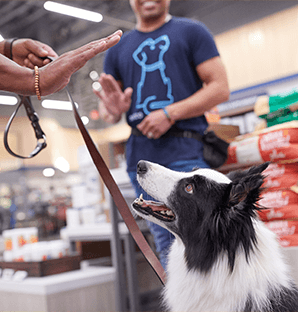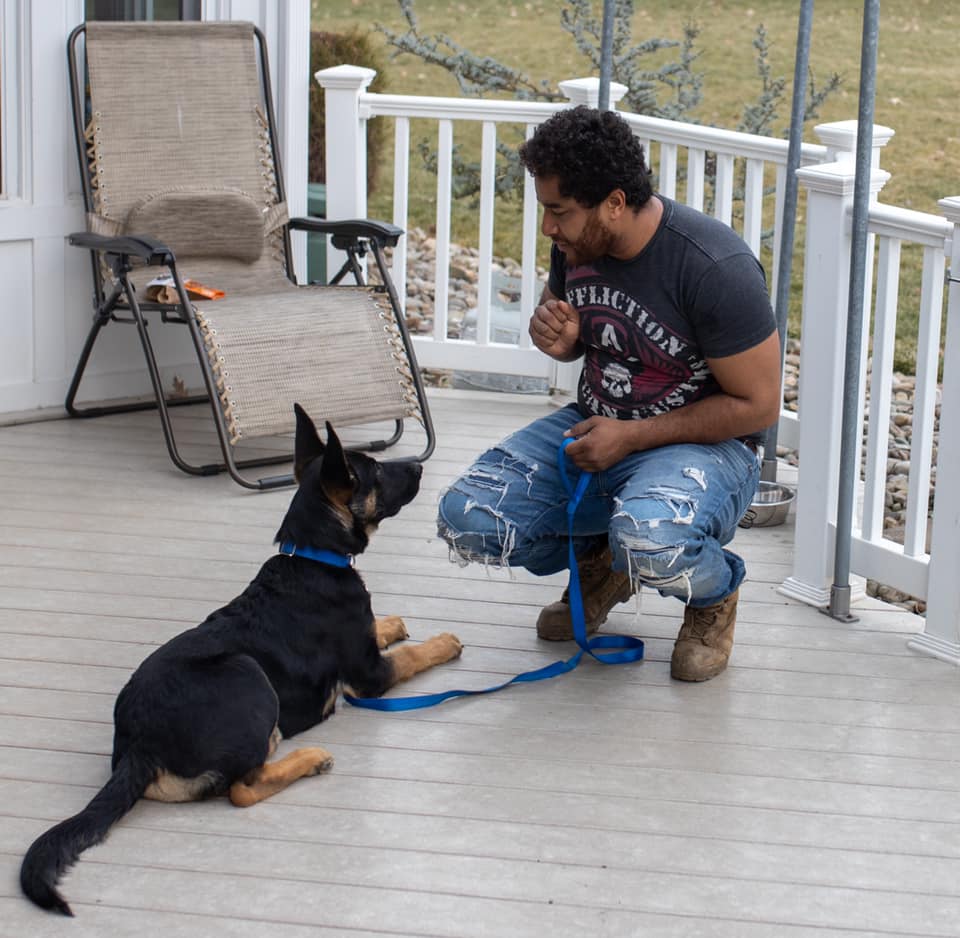Why Local Experts in Dog Training Near Me Outperform DIY Methods
Efficient Techniques for Successful Pet Training: A Comprehensive Overview
Efficient dog training calls for a nuanced understanding of canine actions. It rests on the principles of favorable reinforcement and consistency. Trainers have to identify the importance of important commands and socializing. Addressing common behavioral problems can transform a dog's personality. As the bond in between owner and pet reinforces, the way they interact advances. The journey of effective training includes numerous techniques that might stun also seasoned pet proprietors. What are the crucial elements that can make a considerable distinction?
Understanding Dog Actions
Recognizing canine behavior is important for effective pet training, as it permits fitness instructors to translate a pet's activities and reactions in different circumstances. Dogs interact mainly with body language, vocalizations, and face expressions. Recognizing indications of tension, aggressiveness, or concern can help trainers adjust their approaches to assure a favorable training experience. For example, a wagging tail does not always indicate happiness; the context and other body cues should be thought about.
Furthermore, understanding a pet dog's breed-specific attributes can supply insights right into their actions patterns and reactions. Socializing plays a vital role in shaping a canine's responses to new individuals and settings. Observing a dog's play style can also expose their personality and convenience levels. By meticulously evaluating these actions, trainers can develop customized techniques that cultivate knowing and strengthen the bond in between pet and proprietor, eventually causing more effective training results.
The Significance of Positive Reinforcement
Favorable support is a crucial strategy in canine training that enhances the learning process by satisfying preferred behaviors. This method encourages canines to duplicate activities that yield favorable results, such as deals with, praise, or play (Dog Training Near Me). By associating great behavior with rewards, canines become more motivated and involved during training sessions

Including favorable support right into training regimens can result in quicker discovering and better retention of commands. It promotes a cheerful atmosphere that improves both the canine's experience and the instructor's fulfillment, making it an essential facet of reliable dog training.
Important Commands Every Canine Need To Know

Developing a Consistent Training Arrange
Developing a constant training schedule is vital for effective pet training, as it aids strengthen understanding and creates a sense of regular for the canine. A structured technique enables both the trainer and the pet to anticipate training sessions, which can boost emphasis and interaction. Ideally, training sessions need to be short, enduring in between 5 to 15 mins, to maintain the pet's interest and enthusiasm.
Incorporating training right into everyday activities, such as nourishment or strolls, can likewise advertise consistency. This assimilation helps pet dogs associate training with favorable experiences. It is essential for instructors to remain adaptable; unexpected events might require changes to the timetable.
Additionally, repeating is key. Routine technique of habits and commands strengthens learning and develops self-confidence. By sticking to a consistent routine, instructors can guarantee that their canines create excellent routines and respond accurately to commands, laying the groundwork for reliable training results.
Socializing: Key to a Well-Adjusted Pet dog
Socializing is important for a pet's growth, affecting their behavior and interactions with people and various other pets. Very early direct exposure to various atmospheres, appears, and experiences can substantially enhance a dog's adaptability and confidence. Utilizing efficient socializing methods can aid assure a well-adjusted canine friend.
Relevance of Very Early Socializing

Techniques for Effective Socialization
While numerous canine owners recognize the significance of socialization, understanding effective methods to facilitate this process is crucial for promoting a well-adjusted family pet. Progressive exposure to varied settings, individuals, and other animals can significantly enhance a dog's convenience degree in different circumstances. Positive support plays important source a crucial function; gratifying wanted actions motivates canines to approach brand-new experiences with confidence. Structured playdates with well-mannered pets assist reduce and develop social abilities worry responses. Enlisting in obedience courses can also give regulated environments for socializing. Lastly, keeping a calm attitude as an owner enhances the canine's feeling of safety, enabling even more successful communications. These techniques jointly contribute to a adaptable and balanced canine friend.
Dealing With Usual Behavioral Issues
Handling typical behavior concerns is essential for preserving an unified partnership between pets and their proprietors. Key difficulties such as aggressiveness, too much barking, and jumping behavior need targeted approaches to manage successfully. Recognizing the origin of these habits can bring about successful interventions and an extra balanced canine friend.
Attending To Aggression Issues
Aggression in pet dogs can manifest in various forms, positioning difficulties for trainers and owners alike. Dealing with these problems requires a comprehensive understanding of the underlying reasons, which might consist of source, fear, or territoriality safeguarding. Identifying triggers is crucial; proprietors ought to observe their canine's body language and behaviors to determine details scenarios that prompt hostility. Positive support methods can efficiently customize hostile actions, fulfilling tranquil reactions to recognized triggers. Uniformity is essential, and proprietors need to stay patient throughout the training procedure. In many cases, professional advice from a licensed dog instructor or behaviorist may be called for, particularly for severe hostility. Eventually, the objective is to produce a safe atmosphere for both the dog and those around it.
Taking Care Of Excessive Barking
Too much barking can be a considerable nuisance for pet owners and next-door neighbors alike, commonly indicating underlying concerns that need addressing. Determining the triggers behind the barking is essential; these might include dullness, stress and anxiety, or a feedback to outside stimulations. Owners must observe their dog's habits and setting to identify the reason. Dog Training Near Me. Implementing regular training strategies, such as positive reinforcement, can effectively minimize barking. Educating commands like "quiet" or redirecting the pet dog's focus at the moment of barking can be useful. In addition, giving sufficient physical and psychological excitement via workouts and interactive toys can reduce boredom-related barking. In some instances, consulting an expert fitness instructor or behaviorist might be necessary to develop tailored techniques that deal with consistent barking problems
Reducing Leaping Behavior
Many dogs more helpful hints exhibit jumping behavior, often as a way of expressing enjoyment or seeking attention from their site visitors and proprietors. This habits can be troublesome, particularly when it causes unintentional injuries or discomfort for guests. To reduce jumping, proprietors must initially stay calm and avoid rewarding the actions with focus, as this can enhance it. Instead, they can show an alternate behavior, such as resting, by awarding the pet dog for staying calm when someone methods. Consistency is vital; all member of the family should apply the same rules. In addition, training sessions must include interruptions to help the pet discover to regulate their impulses. Gradually, with patience and perseverance, jumping can be greatly lowered, causing a more positive atmosphere.
Constructing a Strong Bond With Training
Although educating a canine often concentrates on actions and commands, it also works as a necessary opportunity to reinforce the bond between the pet dog and its owner. Engaging in training sessions cultivates communication, good understanding, and trust. When proprietors spend time in showing their pets, they demonstrate dedication, which aids the dog feel safe and secure and valued. Positive reinforcement methods, such as deals with and appreciation, not just motivate wanted behaviors however additionally enhance the emotional connection in between the pet and owner.
Furthermore, uniformity in training constructs a sense of dependability, permitting pets to understand their function within the house. Each successful command enhances the canine's confidence, causing a much deeper partnership. Normal training sessions can become pleasurable bonding experiences, loaded with playfulness my latest blog post and communication - Dog Training Near Me. Eventually, the procedure of training goes beyond simple obedience, producing a collaboration that improves the lives of both the pet and its proprietor
Regularly Asked Inquiries
What Age Is Ideal to Beginning Educating a Pup?
The most effective age to begin training a puppy is generally between 8 to 12 weeks. At this stage, puppies are most receptive to finding out, making it an excellent time for fundamental training and socializing.
The length of time Should Each Training Session Last?
The perfect duration for every pet dog training session usually ranges from 5 to 15 mins, relying on the pet dog's age and attention period. Short, concentrated sessions improve learning and retention, making training more reliable and delightful.
Can Older Canines Still Be Trained Properly?
Older pet dogs can certainly be trained properly. With perseverance and constant techniques, they can learn new commands and habits. Their experience commonly makes them much more receptive to training, enhancing the bond in between pet and proprietor.
What Equipment Do I Required for Training?
For reliable canine training, essential tools includes a strong leash, a comfy harness, high-value deals with, training clickers, and a range of playthings. These tools facilitate interaction and reinforce positive actions during training sessions.
How Do I Track My Pet's Training Development?
To track a pet's training progression, one can preserve a journal, document turning points, and note behavior modifications. Routine evaluations, consisting of timed commands and obedience tests, help determine enhancement and identify locations requiring further interest.
Recognizing canine behavior is crucial for effective pet dog training, as it permits trainers to translate a pet dog's activities and responses in various circumstances. Developing a regular training schedule is important for efficient pet training, as it aids reinforce knowing and develops a feeling of regular for the dog. Training a canine usually focuses on commands and habits, it also serves as a crucial chance to enhance the bond in between the canine and its proprietor. When proprietors invest time in teaching their pet dogs, they show dedication, which assists the pet dog really feel safe and secure and valued. The excellent period for each canine training session usually varies from 5 to 15 minutes, depending on the canine's age and attention span.